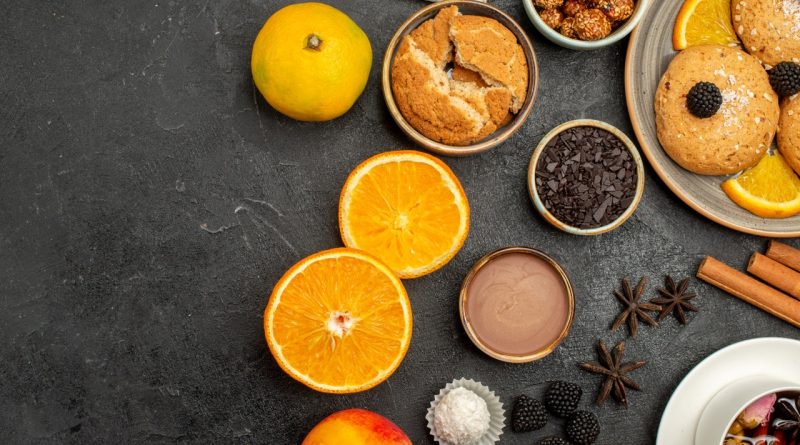The Role of Vanilla in Ice Cream Production
Vanilla is often considered the quintessential ice cream flavor, serving as a base for numerous other creations while also shining as a standalone delight. Its significance in ice cream production extends beyond mere flavoring; it is deeply intertwined with the sensory experience of consuming this beloved dessert. This article explores the multifaceted role of vanilla in ice cream, from its flavoring importance to the complexities of its sourcing and evolving innovations in production.
Understanding the Importance of Vanilla in Ice Cream Flavoring
Vanilla not only enhances the sensory appeal of ice cream but also acts as a complementary base to various add-ins and toppings. The rich, creamy profile of ice cream is beautifully balanced by the warmth and sweetness of vanilla, creating a harmonious blend that appeals to a wide range of taste preferences. As a result, vanilla ice cream has become a classic choice, frequently serving as the foundation for sundaes and desserts that feature additional flavors.
Moreover, the versatility of vanilla allows it to adapt to different formulations and styles of ice cream. Whether it’s a traditional custard-style ice cream or a lighter, dairy-free alternative, the incorporation of vanilla can elevate the overall taste experience. The flavor’s ability to enhance other ingredients, like chocolate or fruit, allows manufacturers to create intricate flavor combinations while maintaining a familiar taste profile.
Finally, the psychological aspect of vanilla’s popularity cannot be overlooked. Often associated with nostalgia and comfort, vanilla-flavored ice cream evokes fond memories for many consumers. This emotional connection can significantly influence purchasing decisions, making vanilla a staple flavor that continues to dominate the ice cream market.
The Chemical Composition of Vanilla and Its Flavor Profile
Vanilla flavor comes from the complex chemical compounds found in vanilla beans, primarily vanillin. This compound provides the characteristic sweet and creamy aroma that people associate with vanilla. However, the flavor profile of natural vanilla is far more intricate, featuring over 200 additional compounds that contribute to its rich sensory characteristics, including ethyl vanillin, p-hydroxybenzaldehyde, and various alcohols and acids.
The extraction process significantly impacts the final flavor of vanilla. Natural vanilla is derived from the pods of the vanilla orchid, and the method of extraction—whether through alcohol infusion, cold pressing, or solvent extraction—can alter the concentration of vanillin and other flavor compounds. High-quality vanilla extracts often possess a more complex flavor profile, with richer floral and caramel notes that enhance the overall ice cream experience.
Understanding the chemical composition of vanilla is crucial for ice cream manufacturers, as it allows them to replicate and enhance the flavor in their products. By utilizing natural extracts or synthetic vanillin, producers can achieve a consistent taste while catering to consumer preferences for both authentic and budget-friendly options.
Vanilla Sourcing: Types, Quality, and Sustainability Issues
The sourcing of vanilla plays a significant role in its quality and availability. The two most widely used types of vanilla are Bourbon vanilla, primarily sourced from Madagascar, and Tahitian vanilla, known for its unique floral characteristics. Each variety has distinct flavor profiles, making them suitable for different applications in ice cream production. The choice of vanilla type can greatly influence the perceived quality and desirability of the final product.
Quality is another crucial consideration in vanilla sourcing. The grading system for vanilla beans is based on factors such as moisture content, oil content, and appearance. Higher-grade beans, such as Grade A, are generally preferred for ice cream production due to their superior flavor and aroma. Unfortunately, the vanilla market has faced challenges with quality control, leading to inconsistencies in flavor and rising prices, which impact manufacturers and consumers alike.
Sustainability issues are also a pressing concern in vanilla sourcing. The high demand for authentic vanilla has led to over-exploitation and environmental degradation in regions where vanilla is cultivated. Additionally, the reliance on manual labor for harvesting vanilla beans raises ethical considerations regarding labor practices. As the industry evolves, there is an increasing emphasis on sustainable sourcing practices, including fair trade certifications and eco-friendly farming methods, to ensure long-term viability for both producers and consumers.
Innovations in Ice Cream Production: Vanilla’s Evolving Role
The ice cream production landscape is continually evolving, driven by changing consumer preferences and advancements in technology. Innovations in production methods have led to the development of new textures and flavors, creating opportunities for vanilla to play an even more versatile role. For example, the emergence of plant-based and dairy-free ice creams has prompted manufacturers to explore alternative vanilla sources, ensuring that flavor integrity remains intact while catering to a growing market segment.
Additionally, advancements in flavor extraction and enhancement technologies allow producers to create more concentrated vanilla flavors without compromising quality. Techniques like microencapsulation enable the preservation of volatile compounds, resulting in a more robust flavor profile in final products. Such innovations not only improve the sensory experience but also allow manufacturers to reduce their reliance on costly high-quality vanilla beans while still delivering exceptional flavor.
Finally, the trend toward transparency and clean-label products has led to a renewed focus on natural flavorings, including vanilla. Consumers are increasingly seeking ice creams made with simple, recognizable ingredients, pushing manufacturers to prioritize natural vanilla extracts over synthetic alternatives. This shift not only aligns with consumer preferences but also fosters a deeper appreciation for the complex flavors vanilla brings to ice cream.
In conclusion, vanilla plays a vital role in the production of ice cream, serving as a beloved flavor that enhances the sensory experience. Its chemical complexity and various sourcing options highlight the challenges and opportunities faced by manufacturers. As innovations continue to reshape the ice cream industry, vanilla’s adaptability ensures it remains a key ingredient, fostering both nostalgia and excitement for consumers. With a focus on sustainability and quality, vanilla will undoubtedly continue to thrive as a foundational flavor in the world of ice cream.
